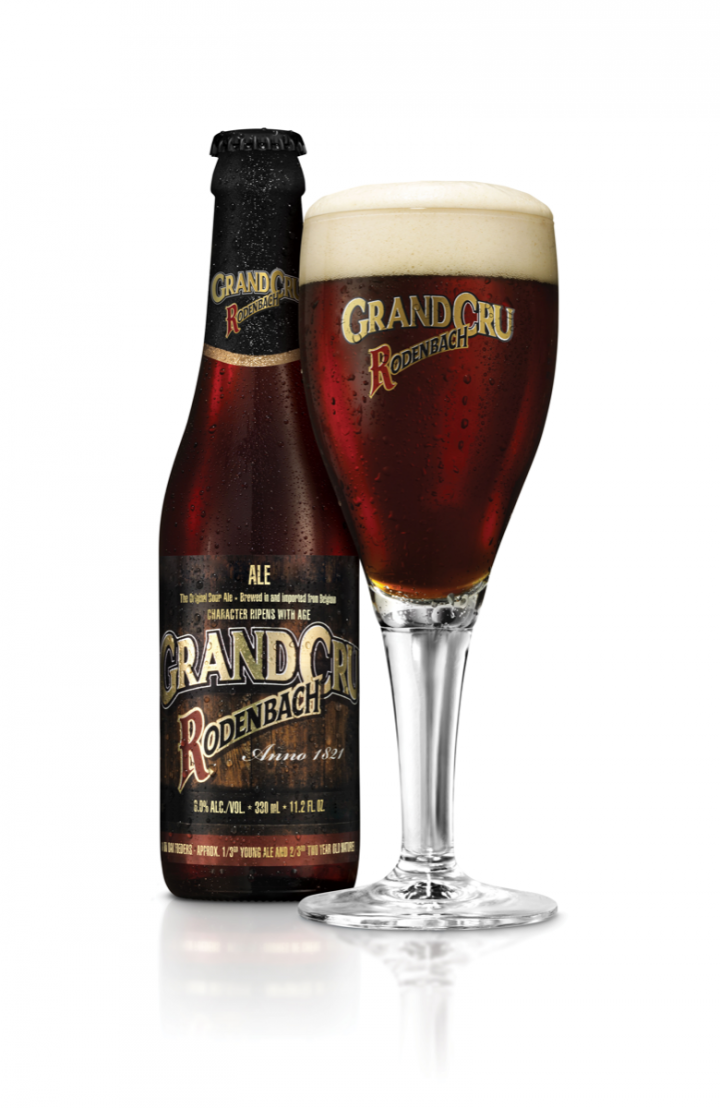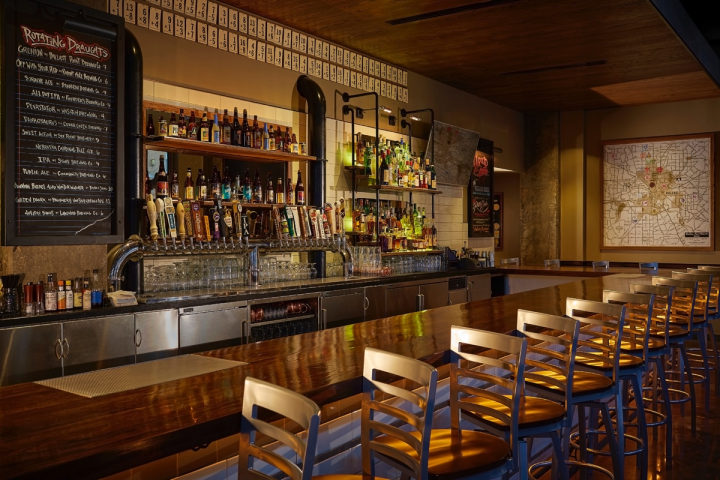
In 2001, before the craft beer craze took America by storm, the San Diego–based chain Keg N Bottle began specializing in beer from Belgium. “We got our hands on any Belgian beers we could—it really separated us from other liquor stores and bottle shops,” recalls Tony Konja, president of the family-owned company. While Konja’s seven beverage alcohol stores still stock more than 250 Belgian beer SKUs ($6 to $40 a 750-ml. bottle), he says the segment has lost market share to domestic craft beer. Konja—who also operates two restaurants in Southern California—points to Belgian-style craft brews in particular for eroding Belgian beers’ stake in the U.S. market.
Indeed, many retailers and marketers of Belgian beers say the imported brews—generally produced in an Old World tradition—are losing out to trendy crafts with their ever-changing styles, unique names and obscure ingredients. However, according to the Beer Institute, shipments of Belgian beer surged 25 percent to 56.6 million gallons last year. Belgium moved into the No.-3 position among countries exporting beer to the United States, second only to Mexico and the Netherlands. The gain in Belgian imports was partly driven by key brands like Stella Artois, which saw a 10-percent depletions increase in 2014, according to Impact Databank.

Blurred Lines
“Craft beer is taking a piece out of everybody,” says Steve Villani, president of Global Beer Network. The company markets the Belgian beer brands Wittekerke, Gulden Draak, Piraat and St. Louis. Belgian beer importers note that many consumers—and even some retailers—don’t distinguish between beer from Belgium and domestically produced Belgian-style brews. “It’s now easy for consumers to find styles like tripels,” says Radeberger Gruppe executive vice president Anthony Giardina. The company handles sales for such Belgian brands as Palm and Rodenbach. Giardina adds that Belgian beer’s storied tradition and heritage is losing appeal with today’s craft beer drinkers, who are obsessed with finding the newest beer on the market. “Belgian beer is anti-new,” he explains. “It has history, heritage and a better story than a brewery that opened a few years ago.”
Some retailers report that sales of traditional Belgian beers, such as dubbels, tripels and witbiers, are slowing while lambics, sours and wild ales are gaining. Bill Scott, beer manager at the Chesterland, Ohio, beer and wine store Red, Wine & Brew, says sales of Belgian beer in his shop are flat. He attributes their performance to familiarity and growing consumer awareness of craft brews. Belgian beers at his store—one of three Red, Wine & Brew units in Ohio—are generally priced at $10 to $12 a 750-ml. bottle.
Yet some on-premise operators say craft beer is aiding sales of Belgian brews. Bob Begandy, bar manager at Dusek’s restaurant in Chicago, reports growth in Belgian offerings despite the craft beer trend, explaining that as consumers become more knowledgeable, they’re increasingly interested in beer tradition and heritage. “They’re finding that beers like Trappist ales are a lost art,” Begandy says. At Dusek’s, Belgian brews are generally priced at $6 a 13-ounce draft pour and $7 to $10 a 12-ounce bottle.
Marc Stroobandt, a master beer sommelier, developed the beer menu at New York City’s Belgian Beer Café. The list exclusively features beers imported from the tiny European country, priced at $7 to $12 a 16-ounce draft pour and $7 a 11.2-ounce bottle to $400 a 9-liter bottle. Thanks to craft beer, consumers are “discovering different styles of beer,” Stroobandt says, citing a rise in Belgian sours, lambics and saisons. Nevertheless, the Belgium native laments that craft brewers have been able to tout their beers as Belgian-style brews. “Belgium was slow to respond to the tactic,” he says. “The country is good at producing beer, but it’s not good at marketing.”

Marketing Focus
Despite headwinds from craft beers, marketers emphasize the authenticity and heritage of Belgian brews. This focus has helped Stella Artois perform “exponentially well year over year,” says Ricardo Marques, vice president of marketing for high-end brands at Anheuser-Busch. He notes growth across trade channels, including grocery outlets, convenience stores, and bars and nightclubs. In addition to the continuation of its glassware program that highlights the brand’s signature chalice, Stella Artois will be supported with a summer food and entertaining campaign this year, along with redesigned bottles, cans and tap handles.
At Duvel Moortgat USA, general manager Bill Wetmore says sales for Duvel have been sluggish over the last couple years. “But we’re seeing some positivity reflected in the numbers lately,” he adds. Wetmore credits the turnaround in part with the brand’s “Mastery” campaign, which revamped the back labels on bottles to tell the beer’s story. The company’s Chouffe label, meanwhile, “has been a diamond in the rough,” Wetmore says. The brand is driven by its gnome imagery and popular on-premise events featuring red gnome hats.
Belgian classics Lindemans and Orval have been weathering the storm, according to Joe Lipa, national sales manager at Merchant du Vin. He reports particular growth for the brands in fine dining accounts, where 750-ml. bottles can be merchandised as an alternative to wine and waitstaff can recommend food and beer pairings. Lindemans Oude Kriek is set to join the Merchant du Vin portfolio this year.
Rodenbach Grand Cru, meanwhile, is rolling out four-packs of 330-ml. bottles, with a suggested retail price of $14.99 to $16.99. Along with other Belgian brews in the Radeberger portfolio, Rodenbach is supported with signature glassware, brewmaster visits, advertising on beer websites and social media to “remind beer geeks that Rodenbach is the original sour beer,” Giardina adds.
Global Beer’s Villani reports that sales of brands like Gulden Draak and Piraat are up, while the company’s sour beers are growing between 30 percent and 40 percent annually. The import company also markets the “Sour Power” six-pack featuring a mix of different Belgian sour brews.

Increased awareness of food and beer pairings bodes well for Belgian beer. “In Belgium, food and beer go hand in hand,” explains Belgian Beer Café’s Stroobandt. “Often beer is a better companion to food than wine as it cleanses the palate.” The New York City eatery suggests pairings like the mussel and clam linguini with Delirium Tremens or the crème brûlée with Timmermans Lambicus Blanche. Begandy of Dusek’s also emphasizes training waitstaff to recommend food and beer pairings, such as hamachi crudo with Orval. Keg N Bottle’s Konja has such a fondness for Belgian beer that he and a few partners opened the Belgian pub Brabant Bar & Café in San Diego in 2013. The venue’s servers make pairing suggestions, and all beer is served in signature glassware.
Belgian beer has contributed to the proliferation of using unique glassware for beer. “We typically serve Belgian beer in a tulip-shaped glass,” says Colin Kerr, who heads up the beverage program at the four-unit gastropub concept Public School in California and Texas. “The glass helps with the effervescence of the beer and the tulip’s bell helps support the head of the beer.” Belgian Beer Café uses only signature glasses from Belgian breweries when serving guests. “We’re very particular about our glassware,” says Stroobandt. “The glass makes a big difference in how the beer is enjoyed.” Marketers are also committed to glassware. “Glassware is our No.-1 marketing expense,” Global Beer’s Villani says.
Belgian Beer Café offers numerous events for guests designed to make them more knowledgeable about the brews it serves. The venue has hosted a series of food and beer tastings ($42 to $45 a person) with themes like “Monastic Beers and Cheeses” and “Tasting Tour of Belgium.” The restaurant also hosts brewmaster visits and parties for Belgian Independence Day on July 21st. At Public School, where Belgian beer sells for $9 to $12 a 14-ounce draft pour, Kerr says “McChouffe” events during St. Patrick’s Day that feature green gnome hats are popular.

Tracing Roots
Retailers describe the typical Belgian beer consumer as knowledgeable about styles, labels and breweries. “They’re often looking for the roots of craft beer,” says Troy Cabral, craft beer manager at High Spirits Liquors in Providence, Rhode Island. These customers often seek out brands like Chimay and Affligem. Belgian beers have become “special occasion beers,” Cabral adds, noting that they’re also “great for dinner pairings.” High Spirits stocks nearly 100 Belgian beers, generally priced between $9 and $18 a 750-ml. bottle. Merchant du Vin’s Lipa believes that classic Belgian brews will increasingly appeal to millennial consumers as they embrace “quality and authenticity.”
While the category may be struggling to stay relevant for fickle beer consumers, most retailers and bar operators agree that Belgian brews will ultimately fare well in the United States. “As more people get into craft beer, they’ll look into different styles and breweries, including those from Belgium,” says Public School’s Kerr. Others note that several Belgian breweries are beginning to adapt to the changes in the United States and are launching their own craft beers, such as Delirium Argentum, made with dry American hops. Stroobandt appreciates the irony. “Belgian brewers inspired American craft brewers,” he says. “Now American craft brewers are inspiring Belgian brewers.”